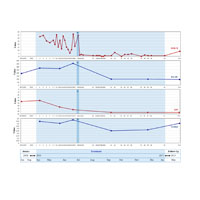Extending Blatt’s two-polarity model of personality development to dissociative identity disorder: a theory-building case study

All claims expressed in this article are solely those of the authors and do not necessarily represent those of their affiliated organizations, or those of the publisher, the editors and the reviewers. Any product that may be evaluated in this article or claim that may be made by its manufacturer is not guaranteed or endorsed by the publisher.
Authors
In this theory-building case study, we investigate Blatt’s two-polarity model of personality development according to which psychopathology is a consequence of an unbalance between the two developmental lines of interpersonal relatedness and self-definition. Anaclitic psychopathology, such as schizophrenia, histrionic, dependent, and borderline personality disorders, is associated with an excessive and rigid emphasis on interpersonal relatedness. In this theory-building case study, we examine whether this model can be extended to dissociative identity disorder (DID). The patient is a 23-year old Caucasian man who suffers from periodic episodes of dissociation. Consensual qualitative research for case studies is used to quantitatively and qualitatively describe the interplay between symptomatic and interpersonal evolutions throughout 41 sessions of supportive-expressive psychoanalytic psychotherapy. In line with the two-polarity model of personality development, close associations between symptoms of dissociation and dependent interpersonal dynamics were observed. Psychoanalytic interventions focusing on elaboration of the subjective meanings of (past and anticipated) dissociations, and on working through core interpersonal conflicts, are followed by transformations in the patient’s interpersonal stances and subjective well-being. No new dissociative episodes were reported during the follow-up assessment three and a half years after the completion of treatment. This case study demonstrates that DID is a form of anaclitic psychopathology as it is associated with a predominant tendency to interpersonal relatedness.






